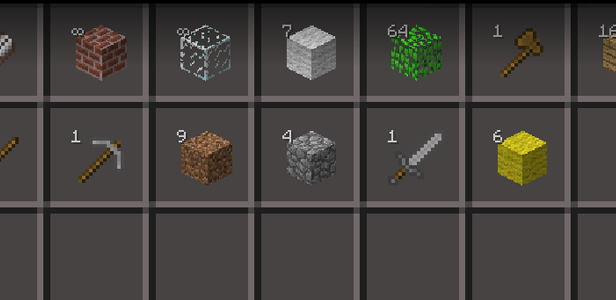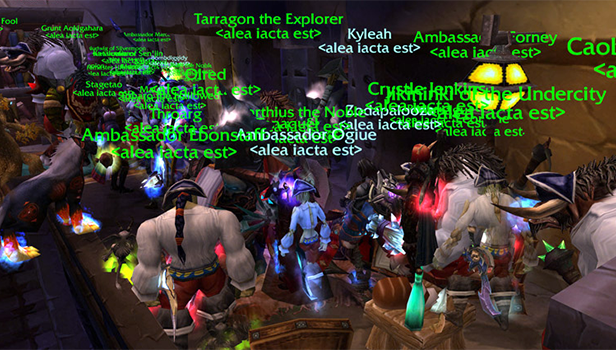- Join User Analysis Beta
- Market Research
- Analytics
- Powerful analytics
- Upgrade to Pro
- Data Tools
- Resources
- Pricing
Author profile
Anders Drachen
Anders Drachen, Ph.D. is a veteran Data Scientist, Game Analytics consultant and Professor at the DC Labs, University of York (UK).

9 min read
#GameAnalytics Updates
Getting Started With GameAnalytics
Analytics is a powerful tool for informing decision making at strategic and operational levels in game development. It will help you answer key questions about design, fun, engagement, play, monetization and more. But it is a relatively new process in game development and there is not a lot of knowledge available out there for the non-expert. In this blog post, we will try to help you get started on analytics.

3 min read
#Data & Analytics
Frequent Itemset and Association Rule Mining
Frequent itemset mining is an interesting branch of data mining that focuses on looking at sequences of actions or events, for example the order in which we get dressed. Shirt first? Pants first? Socks second item or second shirt if wintertime? Sequence analysis is used in a lot of different areas, and is also highly useful in games for finding behavioral patterns that lead to particular behaviors, for example a player quitting a game. Here is how it works.

5 min read
#Data & Analytics
Practical Issues In Game Data Mining
Apart from the purely methodological concerns that gains the most attention on this blog, there are a range of important issues to consider when planning to or performing collection of game telemetry and mining of this type of data. For example, confidentiality of user data and effective pre-processing approaches are among the most important. Here we take a brief look at some of them.

4 min read
#Data & Analytics
Third Party Analytics: What Are The Options?
Outside the companies that actually develop computer games and other forms of interactive entertainment, a rapidly increasing number of third-parties have emerged in the past few years to provide analytics-related services to companies. Here we provide a brief overview of the types of providers available and the pros/cons of their services.

4 min read
#Game Mechanics
Feature Selection and the Law of Diminishing Returns
A problem that recurrently mentioned during the recent Data Science Day in Berlin is feature selection: given the array of possible variables/features to track from a digital game, which of these should we track? The solution I heard mentioned most often was: track everything, analyze everything. However, this approach is not without its problems, notably in terms of the resources it requires to analyze everything. Another thing to consider is the law of diminishing returns.

4 min read
#Data & Analytics
What Is Game Telemetry?
Telemetry one of the fundamental terms in game analytics, describing the collection of data over a distance. The collection, analysis and reporting of user-behavior telemetry is the foundation for current analytics in game development. There is some confusion about the term, however, so we wanted to provide a bit of information about what telemetry is and its properties.

5 min read
#Data & Analytics
What Are Game Metrics?
In a previous post we discussed what game telemetry is, i.e. the data we use as inputs in game analytics processes. Game metrics is what telemetry is transformed into, and what provides the direct value to development and monetization. In this post we try to set up a definition for what a game metric is.

4 min read
#Data & Analytics
Metrics In Online Games: A Historical Perspective
Online games are of particular interest in game data mining because their underlying business model is highly dependent on understanding player behavior, and currently one of the major forces driving the use of and innovation in data mining in game development. In this post, we take a brief look at the historical background behind the current situation and discuss a few business perspectives.

3 min read
#Data & Analytics
Measuring Player Experience
A topic that is currently gathering a lot of interest in the games research community is how player behavior in-game relates to the subjective experience of playing a game. The implications are obvious: if we can analyze the behavior of a player and find out whether or not the player is having a good experience playing the game, and if not why, there is a lot of revenue that we can prevent loosing from players quitting. However, there are some challenges towards this.

4 min read
#Data & Analytics
Fundamentals of Gameplay Metrics Work (Pt. 2/2): Explorative vs. Hypothesis Driven
How do we work with gameplay metrics at the fundamental level? In the first part of this post the concepts of analysis ("breaking down things") and synthesis ("putting things together") were introduced as two fundamental approaches used here at Game Analytics to help categorize and define workflows. In the second part, we dig deeper and look at the factors driving the work.

3 min read
#Data & Analytics
Fundamentals of Gameplay Metrics Work (Pt. 1/2): Synthesis Vs. Analysis
Gameplay metrics form the "bread and butter" telemetry data when evaluating design. These are the metrics that describe how people actually play games. But how do you work with them? In this two-parter, we take a look at the theoretical fundamentals that inform telemetry work at Game Analytics.

4 min read
#Data & Analytics
Ten Great Game Telemetry Reads
Given the huge degree of interest in game telemetry and the analysis of player behavior, not the least in the social online games/F2P area, it is no surprise that there is a steadily increasing stream of posts, articles and reports being released on various topics within analytics. We wanted to bring you some of the most interesting.

2 min read
#Data & Analytics
The Allure Of Numbers
For people working with game analysis, gameplay metrics (measures of player behavior, e.g. navigation, item- and ability use, trading etc.) is the kind of data that - if data were gemstones – would be diamonds. And not the regular white, discount version but the flawless blue ones that we need Indiana Jones to steal back from bad-tempered natives in the South American jungle.